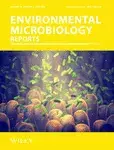
As part of ongoing efforts to discover novel polyhydroxyalkanoate‐producing bacterial species, we embarked on characterizing the thermotolerant species, Paracoccus kondratievae, for biopolymer synthesis. Using traditional chemical and thermal characterization techniques, we found that P. kondratievae accumulates poly(3‐hydroxybutyrate) (PHB), reaching up to 46.8% of the cell's dry weight after a 24‐h incubation at 42°C. Although P. kondratievae is phylogenetically related to the prototypical polyhydroxyalkanoate producer, Paracoccus denitrificans, we observed significant differences in the PHB production dynamics between these two Paracoccus species. Notably, P. kondratievae can grow and produce PHB at elevated temperatures ranging from 42 to 47°C. Furthermore, P. kondratievae reaches its peak PHB content during the early stationary growth phase, specifically after 24 h of growth in a flask culture. This is then followed by a decline in the later stages of the stationary growth phase. The depolymerization observed in this growth phase is facilitated by the abundant presence of the PhaZ depolymerase enzyme associated with PHB granules. We observed the highest PHB levels when the cells were cultivated in a medium with glycerol as the sole carbon source and a carbon‐to‐nitrogen ratio of 10. Finally, we found that PHB production is induced as an osmotic stress response, similar to other polyhydroxyalkanoate‐producing species.
Paracoccus kondratievae is a thermotolerant bacterium that is demonstrated to be a PHB producer in this study. It accumulates PHB upon growth on several carbon sources with different carbon/nitrogen ratios and as a response to osmotic stress conditions. At elevated temperatures, growth kinetics as well as the kinetics of PHA accumulation were found to be different as compared to the known mesophilic PHA producer Paracococcus denitrificans.
Link to Publisher’s page:
